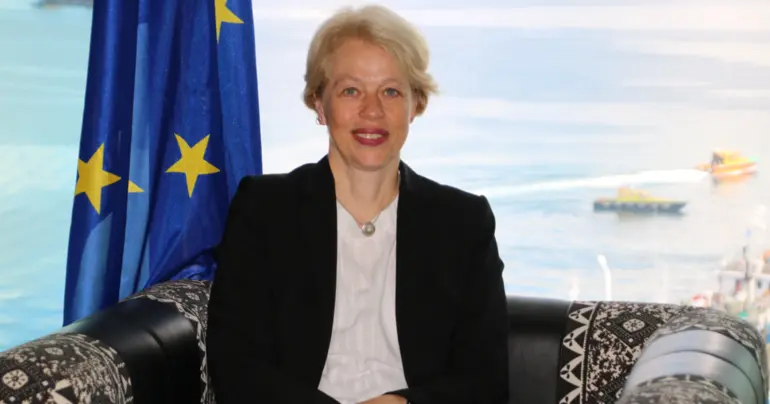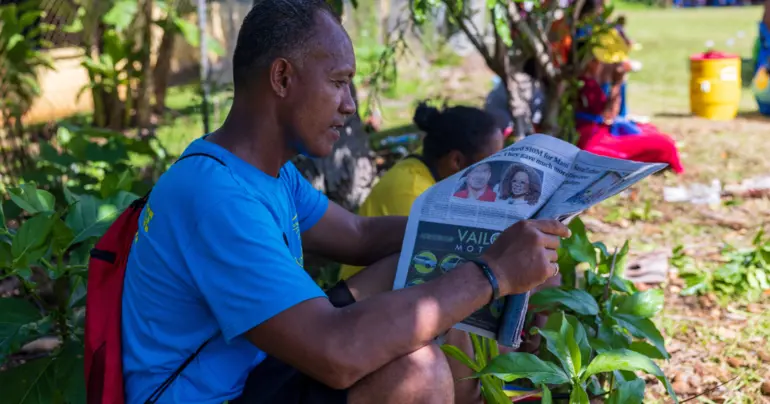Smuggling budgies? Australia’s fight against wildlife trafficking
Australia’s flora and fauna are a unique and treasured part of how we engage with the world, playing a central role in tourism campaigns and diplomatic initiatives, and in generating goodwill at a personal level across the international community.
Living in Canberra, I’m lucky enough that the sight of a kangaroo or wallaby has become rather passé, there are wombats and echidnas aplenty, and there’s even a well-known spot where you might lay eyes on a platypus. The variety of birdlife is always a treat, from the delightful gang-gang cockatoo to eastern rosellas, my neighbourhood’s resident black-shouldered kite and the Australian National University’s chatters of choughs.
If we want to preserve this legacy for future generations, urgent steps need to be taken to address the threat posed by climate change and habitat loss, but these are not the only sources of danger for Australia’s biodiversity. Wildlife trafficking is a significant and persistent threat, both in the import of exotic creatures to Australia and the illegal export of native fauna.
According to the Wildlife Crime Research Hub at the University of Adelaide, and as reported by the ABC last month, “wildlife trafficking is the fourth-largest organised crime globally, worth over $450 billion a year”. Kangaroos, native parrots, and especially reptiles, have proven to be a lucrative commodity for criminal syndicates to smuggle out of the country and sell throughout Asia. The illegal trade in Australian wildlife is also recognised by AUSTRAC – Australia’s financial intelligence organisation – as particularly attractive for transnational criminal organisations as a consequence of its “large profits and lower penalties compared to smuggling illicit substances”.
This trade takes place within Australia, too. Another study from the University of Adelaide in 2023 found that, in a mere 14 weeks between December 2019 and March 2020, approximately 100,000 individual live animals were traded within the country. A particular problem that this research highlights is that animals brought to Australia before the 1980s were free to be bred in captivity, which “provides an element of plausible deniability. Traders can declare their animals to be captive-bred within Australia, even if some have been smuggled into the country at a later stage.”
The same is also true in reverse, with Australian native animals bred and sold internationally from previously (legally) exported animals, and the situation is made more ambiguous because some protected species are also found in neighbouring countries such as Indonesia, from where they can be legally exported. The picture is murky, and it’s one that I have been confronted with personally.
Before moving back to Australia in 2022, my wife and I lived in the Middle East for four years, in Jordan and Kuwait. In that time, invariably one of the first things locals and expats alike would ask about were Australia’s unique animals and birds … once we had addressed their concerns about sharks, snakes, and spiders. Beyond doing my ambassadorial duties to dispel the wilder rumours and assure everyone that they were not risking impending doom merely by setting foot outside, it was clear that people harboured a lot of goodwill towards Australia in connection with our nation’s biodiversity.
At the time of the Black Summer 2019–20 bushfires, we were struck by the frequent and genuine concern that friends expressed about the devastation that had been wrought upon Australia, its landscape, and ecosystems. It was, until a certain novel coronavirus came along, a dominant (and unprompted) theme to many of our conversations for several months.
However, despite this, you can imagine my surprise when some acquaintances were very excited to tell us about their pet sugar gliders – which we understood to be a protected, native, Australian species. Suffice it to say, I suspect that our response was not quite as positive as they had hoped.
Now, in retrospect, I may owe them a (conditional) apology. I’m no more excited now about people keeping these marsupials as pets than I was then, but a 2019 study from the University of Canberra suggests that, at least based on their available datasets, the sugar glider population in the United States appears to originate from a species native to the island of New Guinea that was exported from Indonesia, where it is legal to do so. At the same time, the marketing and advertising of these creatures often tries to draw connections to Australia, and the same problem of plausible deniability exists.
While not as fundamental a threat as climate change, the trafficking of Australian wildlife remains a pressing issue for state and federal governments to address. Our native species are central to how Australia expresses itself internationally and are a unique treasure for which we are all custodians.
This article was first published on Lowy Institute’s blog site The Interpreter. David M. Andrews is a Senior Policy Advisor at the ANU National Security College and a PhD candidate at La Trobe University. His thesis examines the factors which contribute to the evolution, stagnation, or collapse of multilateral security organisations. He previously held multiple roles in the Department of Defence, including in military strategy, strategic policy, and export control.











